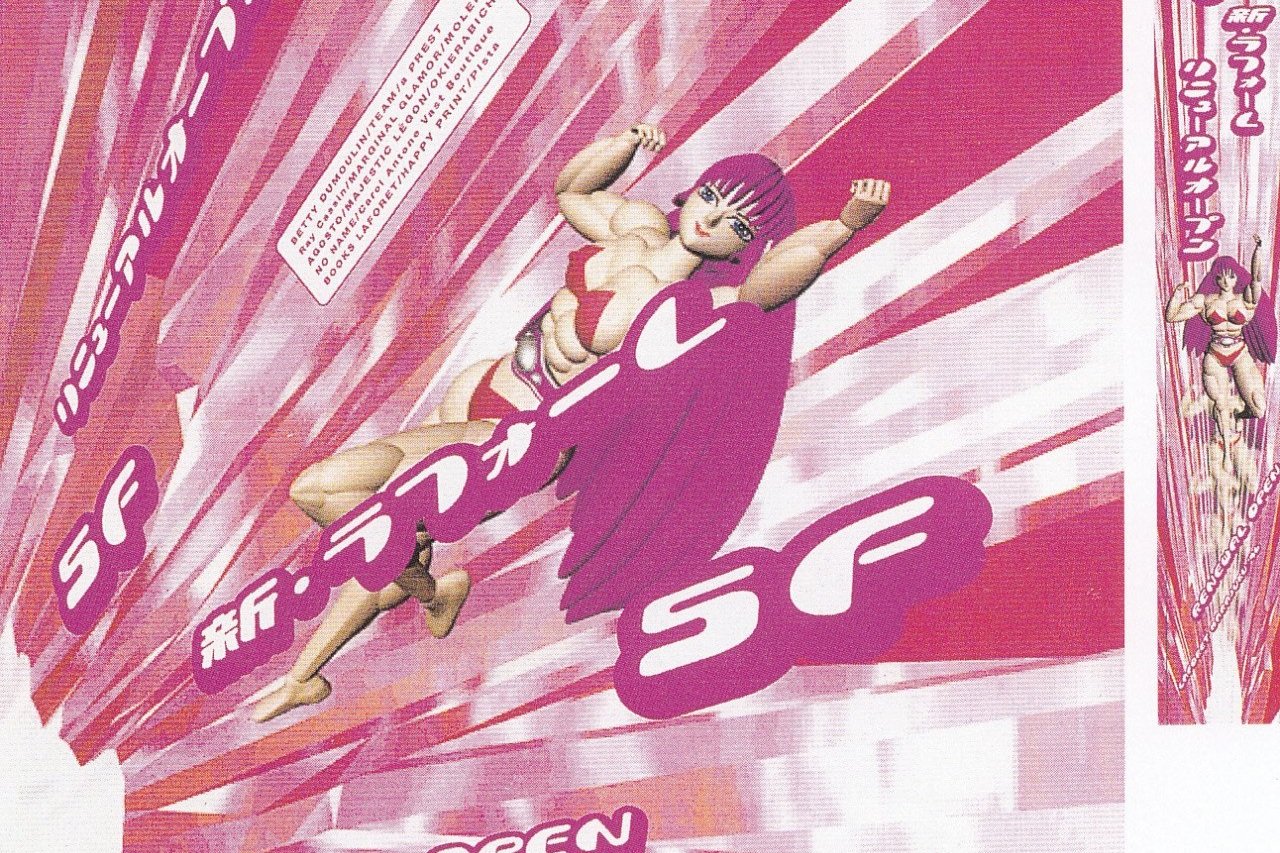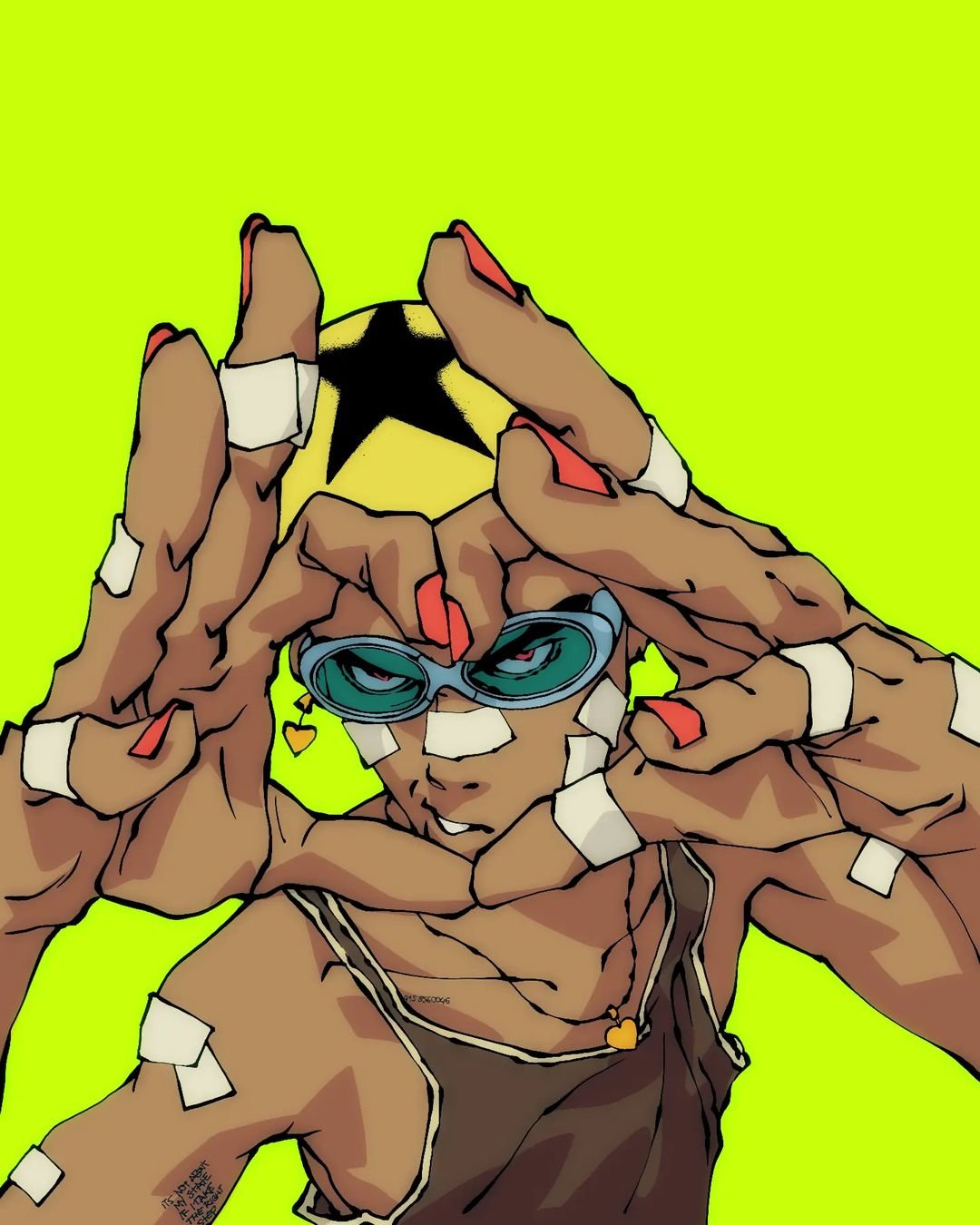Cuteness with a little poison: Hideyuki Tanaka’s work

While watching some random Japanese variety show or a music video of a J-pop sensation, on an album cover or a t-shirt of an haute couture brand, at old video games from the early '00s, you will probably come across the work of Hideyuki Tanaka, one of the most important and prolific creative minds of contemporary Japan.
Born in 1962 and graduated from the Department of Graphic Design of Tama Art University, Hideyuki Tanaka, a designer turned art director and multidisciplinary creative, who, during the '90s, quickly became a key figure in the Japanese commercial visual industry of the new millennium.
Milk-chan, Hideyuki Tanaka [FrameGraphics], 1999
Original Artwork, Hideyuki Tanaka [FrameGraphics],2000
Influenced by the work of manga classics, such as Osamu Tezuka, author of Tetsuwan Atom (Astroboy) and Fujio Akatsuka, the "King of Gag Manga", creator of the classics, Osomatsu-kun and Tensai Bakabon, he would be inspired by space travel, Artificial Intelligence, Cyborgs and gadgets corresponding to the Japanese retro futuristic boom of the late 90's, to create, with its unique sense of cuteness, a body of work that would be internationally recognized as part of the Japanese identity of the 21st Century.
Hideyuki Tanaka began as a 3D designer and animator for the surreal 1992 children's variety show, Ugo Ugo Ruuga, designing and animating a mix of giant robots, explosions, incredible transformations and endless random humor that would confirm the versatility of his creative vision.
While his work at the time was definitely different from the rest, it wasn’t until the period from 1997, the year when he founded FrameGraphics, his creative studio, to 2000, when he developed a much more complex artistic style, finding in character design, one of its main strengths.
Proof of this is found in his most representative works of the period: His collaborations with musical projects such as Denki Groove, whose relationship would extend to date and the teenage sensation of the time, Tomoe Shinohara, ambassador of Harajuku culture. Projects in which he participated in every creative aspect, from the direction and animation of music videos, to album concept and visual identity, including character design for both musical projects.
Album cover for Tomoe Shinohara's" Supermodel", Hideyuki Tanaka [FrameGraphics], 1996
Album cover for Denki Groove's "VOXXX", Hideyuki Tanaka [FrameGraphics)] 2000
His style shined in the video games series for PlayStation, Bust a Groove (1998-1999), in which he worked as a creative director and producer, incorporating in an iconic way in each of its characters every representative aspect his personality as a creator, including the retro futuristic look, the funk attitude and the irreverence of the time.
Characters from "Bust a Groove", Hideyuki Tanaka [FrameGraphics], 1998, 1999
Hideyuki Tanaka's work had an important relationship with the development of technology as an enabler of artistic concepts. Like his contemporaries, the foreign studios, Me Company, Attik, Tomato and especially, The Designers Republic, he brought the techno feeling to the graphic field, but this time not from immersion as Me Company or Attik preached, nor from visual sampling and parody as The Designers Republic practiced. But from referencing and updating the cultural heritage of his country. After all, Ian Anderson, founder of The Designers Republic was heavily inspired by Japanese pop culture.
Hideyuki Tanaka made this cultural update by favoring the use of the katakana syllabary instead of kanji, by using manga elements and typo sampo (street typography) in his compositions, such as the thick outlines that appear in onomatopoeias and speech balloons and by developing a body of work that became second nature to a generation already familiar with Hello Kitty, Doraemon and Miffy but growing increasingly interested in Tomb Raider, Wipeout!, Final Fantasy and PaRappa the Rapper.
Heat from Bust a Groove 2, Hideyuki Tanaka [FrameGraphics], 1999
Kitty Nakajima from Bust a Groove 2, Hideyuki Tanaka [FrameGraphics], 1999
In January 2000, FrameGraphics original anime OH! Super Milk-chan, first time aired. Animated by Studio Pierrot and directed and produced by Tanaka himself, OH! Super Milk-chan, became from the very beginning, a hit classic among anime aficionados and adult audiences alike.
OH! Super Milk-chan characters, Hideyuki Tanaka (FrameGraphics), 2000
Milk-chan, was mysterious and a little bratty girl of unknown age, who constantly drools over sushi and junk food and doesn’t want to pay her monthly rent because she thinks stimulus money shouldn’t be returned and despite her cutesy looks, had an incredibly acid sense of humor, wasn’t like any other character on Japanese TV at the time.
"I wanted to make an anime that would make older people laugh. I also wanted to add a little poison to it… I’m not a “dark” person, I have no political agenda. [My work] is like friends laughing at a tavern ... When I'm talking at an izakaya, there’s so many radical jokes. I want to create that atmosphere”. -Hideyuki Tanaka.
Milk-chan, Hideyuki Tanaka (FrameGraphics), 1999-2021
Milk-chan’s acid sense of humor elevated the series to a cult classic status but it was her sci-fi, cute but irreverent, retro futuristic and iconic design that cemented Hideyuki Tanaka’s visual style: A perfect blend between techno postmodernism and the iconic characters of the mid-Shōwa era (1926-1989).
OH! Super Milk-chan was just the tip of the iceberg. His extensive experience in any audiovisual media catapulted him to become one of the nation's most prolific visual creators, collaborating in a wide range of disciplines such as art direction, video direction, animation, character design, packaging design and even fashion marketing.
This last aspect earned him relevance within the alternative culture of Harajuku, having clients such as Laforet Grand Bazar for which he made the controversial commercial campaign "The Giant Bra" (2001) and the direction of the alternative haute couture clothing brand, Super Lovers.
Ad for Super Lovers, Hideyuki Tanaka [FrameGraphics], circa 1999
Ad for Super Lovers, Hideyuki Tanaka [FrameGraphics],circa 1999
His influence on the television world remained intact. OH! Super Milk-chan, despite being an original anime, not based on a manga or any other kind of product and being financially risky, was broadcast in Space Shower a popular music channel, Animax and eventually, in the West by Adult Swim, while his Little Village People (a Japanese equivalent to Beavis and Butt-Head), reached MTV’s programming. Ironically, many of his non-anime related work for the NHK, Fuji TV, TBS and other Japanese TV networks, consists mostly art direction for educational and cultural variety shows.
In the music field, FrameGraphics became, during the 00' and 10', a standard of production. Denki Groove, whose relationship had begun since the birth of both projects, was joined by JUDY AND MARY for whom the characters designed by Hideyuki Tanaka became their identity, AKB48, Wire music events by Ki/oon Records, Tomoe Shinohara's generational successor, Kyary Pamyu Pamyu, Charli XCX, A.G. Cook, The 1975, YUKI and many other musical acts.
Characters for JUDY AND MARY’s “The Great Escape”, Hideyuki Tanaka [FrameGraphics], 2001
Frame from Kyary Pamyu Pamyu's MV "最&高", Hideyuki Tanaka [FrameGraphics], 2016
Despite the changes of visual trends and the homogenization of graphic styles brought by the post-Internet era and the democratization of graphic tools, Hideyuki Tanaka has remained attractive to new generations. Underneath an apparent simple body of work, his work can be timeless but widely adaptable to new trends thanks to its authenticity.
Artwork from No Rome's "Spinning", featuring Charli XCX and The 1975, Hideyuki Tanaka [FrameGraphics], 2021
Even when he doesn’t feel his creations timeless, commenting that they are "an image of the late 90's, an imprint of what a city that fade away looked like", is the constant search for new horizons that have made his images, characters and visual language, not just part of TV programs, music videos or video games, but part of the air of a city that like him, has changed, but never lost its essence.
About the Author:
Leonel Martínez is a social media consultant and a writer living in Mexico City. Japanese culture, graphic design and art aficionado. Describes himself as a "cultural worker".
Bibliography Reference:
お仕事図鑑 | 第5回(前):フレイムグラフィックス 映像クリエイタ 田中秀幸さん. (2018). キモエねっと. https://www.kimoe.net/work/05_1/index.html
第6回展 田中 秀幸 「田中秀幸 フレイムグラフィックス アーカイブス」. (2004, 24 abril). Canon Gallery S. https://cweb.canon.jp/gallery/s/archive/exhibition006.html
Laforet Harajuku: «THE GIANT BRA» Film by Onuki Design - AdsSpot Advertising Archive. (2016, 7 julio). AdsSpot.Me. https://adsspot.me/media/tv-commercials/laforet-harajuku-the-giant-bra-77796965eee0
Staff, S. (2020, 15 octubre). 1998 Hideyuki Tanaka Exhibition 2020 トークライブ [Vídeo]. YouTube. https://www.youtube.com/watch?v=5LQZBLT22N8&feature=youtu.be





